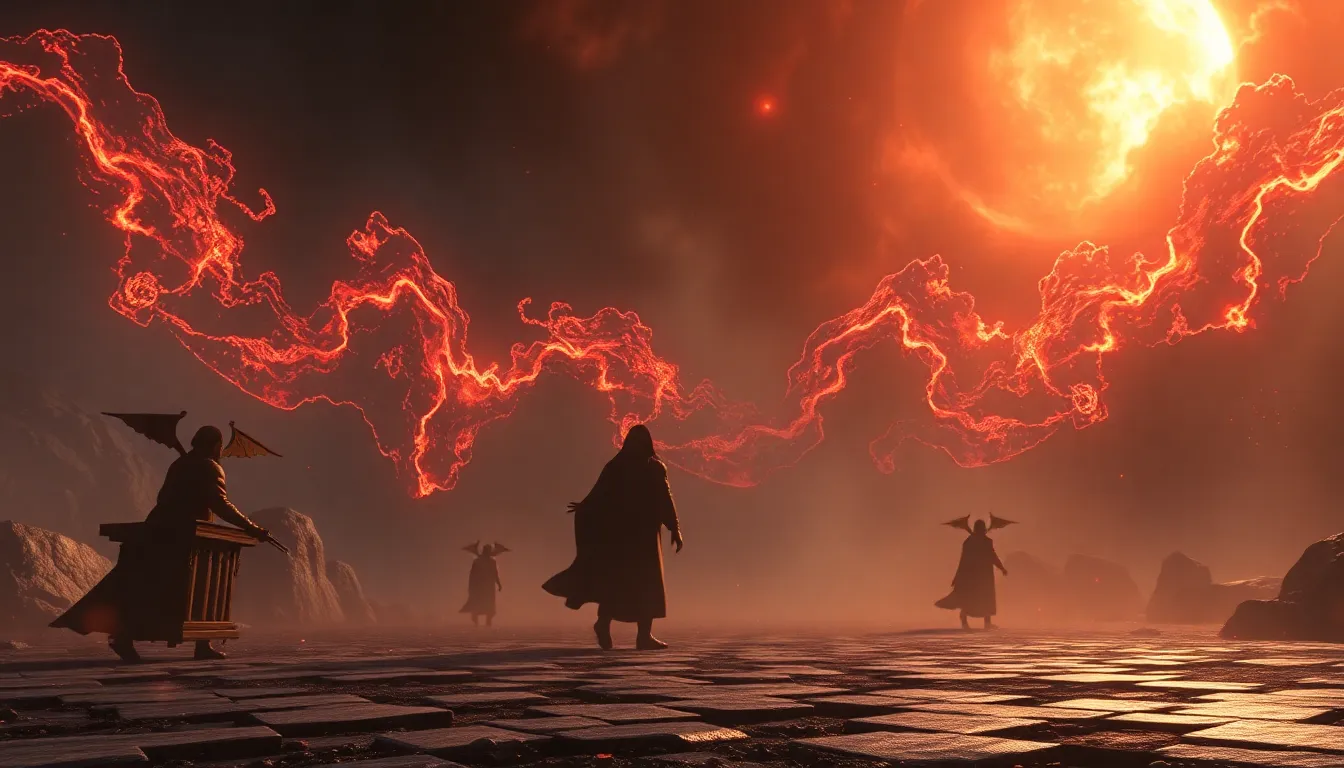The Quest for the Enchanted Vision: Myths of Clarity
I. Introduction to the Concept of Clarity
Clarity is a multifaceted concept that varies across different contexts, from visual acuity to mental understanding. In essence, clarity can be defined as the quality of being clear, coherent, and easily understood. In communication, it refers to the precision with which ideas are expressed, while in vision, it denotes the sharpness and focus of what one sees.
Clarity is paramount in human perception and understanding. It affects our ability to make decisions, interpret information, and engage with the world around us. When clarity is achieved, individuals can navigate complexities with greater ease, leading to more informed choices and deeper insights.
Throughout history, myths and stories have emerged that explore the elusive nature of clarity. These narratives often reflect cultural beliefs and values, highlighting humanity’s ongoing quest for vision, understanding, and enlightenment.
II. Historical Perspectives on Clarity
Ancient cultures have long sought to understand vision and clarity through various lenses. For instance, in many Indigenous cultures, clarity of vision was often associated with spiritual insight and the ability to see beyond the physical realm.
In Greek and Roman mythology, figures like Tiresias, the blind prophet, symbolize a different kind of clarity—one that transcends physical sight. Tiresias possessed the gift of foresight, demonstrating that insight often comes from inner vision rather than mere physical perception.
Eastern philosophies, such as Buddhism and Taoism, emphasize the pursuit of clarity through mindfulness and meditation. These traditions teach that true clarity arises from within, through the stilling of the mind and the observation of one’s thoughts and experiences.
III. The Symbolism of Vision in Literature and Folklore
Enchanted vision frequently appears in fairy tales and folklore, serving as a metaphor for the journey towards self-discovery and understanding. For example, in many stories, characters embark on quests that lead them to magical objects or wisdom that grants them clarity.
- Notable Literary Works:
- “The Alchemist” by Paulo Coelho explores the journey of self-discovery and clarity of purpose.
- “The Little Prince” by Antoine de Saint-Exupéry delves into seeing the world through the eyes of a child, emphasizing the clarity of simple truths.
Archetypal characters, such as the wise old man or the innocent child, often embody the quest for vision, reminding readers of the importance of perspective and understanding in their own lives.
IV. Psychological Insights into Clarity
Psychologically, perception plays a vital role in shaping our reality. How we interpret what we see and experience can significantly influence our thoughts and emotions. Cognitive biases, such as confirmation bias and the Dunning-Kruger effect, can cloud our judgment and hinder our quest for clarity.
Achieving clarity has numerous psychological benefits. It can lead to reduced anxiety, improved decision-making, and greater overall well-being. When individuals cultivate clarity, they often find a sense of peace and purpose, enabling them to engage more fully with their lives.
V. The Intersection of Science and Myth
Neuroscience has made significant strides in understanding the mechanisms behind vision. Research has revealed how the brain processes visual information and how our perception can be influenced by various factors.
Many myths surrounding vision have been debunked by scientific research. For example, the belief that humans only use 10% of their brains is a myth; neuroscience shows that we utilize different parts of our brains for different functions.
As scientific advancements continue, the quest for clarity evolves, integrating new discoveries about the human mind and its capabilities.
VI. The Role of Meditation and Mindfulness in Achieving Clarity
Historical practices aimed at enhancing vision and clarity can be found in various cultures. Meditation, for instance, has been used for centuries as a tool for achieving mental clarity and insight.
Modern techniques for mindfulness, such as focused breathing and guided imagery, have gained popularity for their effectiveness in promoting clarity. These practices help individuals quiet their minds and gain perspective on their thoughts and feelings.
Many individuals share personal anecdotes of achieving clarity through meditation. For example, someone may describe how a simple mindfulness practice allowed them to gain insight into a challenging life situation, leading to transformative changes.
VII. The Modern Quest for Clarity in a Distracted World
In today’s fast-paced, technology-driven society, the quest for clarity faces unique challenges. The constant barrage of information and distractions can make it difficult to achieve mental clarity.
Information overload has mythic implications, often leading individuals to feel overwhelmed and confused. This chaos can cloud judgment and hinder the ability to think clearly.
Strategies for finding clarity amidst chaos include:
- Setting aside dedicated time for reflection and mindfulness.
- Limiting exposure to information sources that contribute to confusion.
- Engaging in activities that promote focus, such as reading or spending time in nature.
VIII. Cultural Variations of the Myth of Clarity
Different cultures interpret the quest for vision and clarity in diverse ways. For instance, in Indigenous cultures, clarity is often linked to the natural world and ancestral wisdom, while in Western societies, it may be associated with rational thought and scientific inquiry.
A comparative analysis of myths across cultures reveals common themes, such as the journey toward self-discovery and the importance of perspective. These stories highlight the universal nature of the quest for clarity and insight.
Lessons learned from diverse cultural perspectives can enrich our understanding of clarity and its significance in our lives.
IX. The Future of the Quest for Clarity
Emerging trends in the pursuit of clarity include the integration of technology into mindfulness practices, such as meditation apps and virtual reality experiences designed to enhance focus and clarity.
As technology continues to evolve, its role in enhancing clarity of thought is likely to expand. This may lead to new myths and narratives surrounding clarity, reflecting the changing relationship between humans and technology.
X. Conclusion: Embracing the Journey towards Clarity
The quest for clarity is a significant journey filled with challenges and insights. It encourages individuals to explore their perceptions, beliefs, and values, fostering personal growth and understanding.
As we reflect on the importance of clarity in our lives, we are encouraged to explore our interpretations of what clarity means and how we can cultivate it in our daily experiences.
Ultimately, myths surrounding clarity serve as a reminder of the timeless quest for understanding, urging us to seek vision and insight in a complex and ever-changing world.



